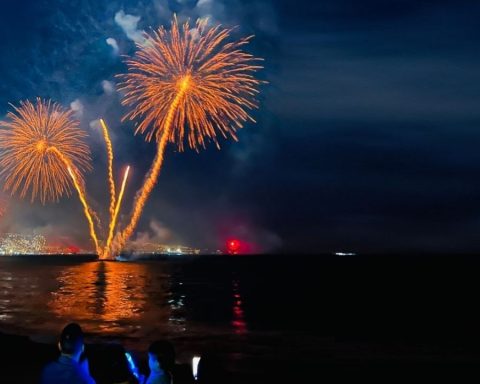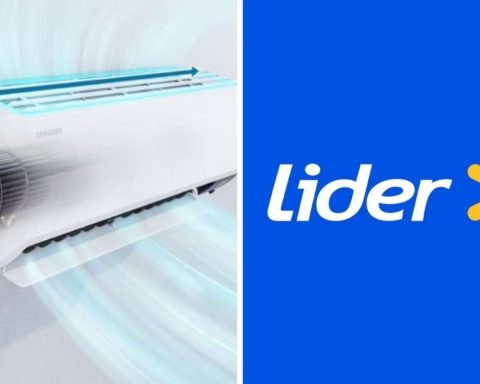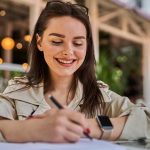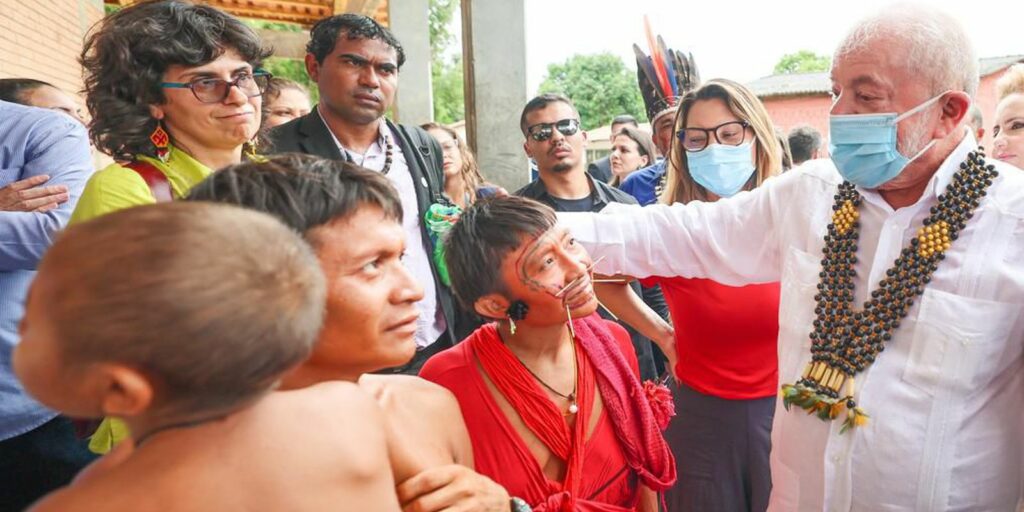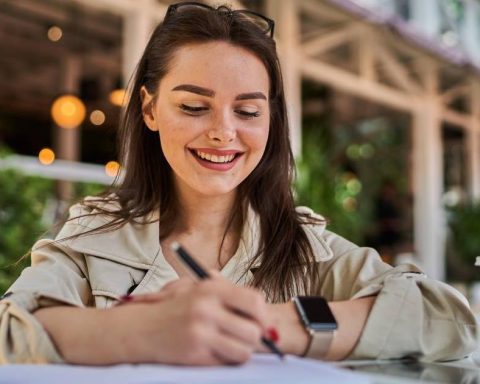In April 2021, at the age of 24, public administrator Diego González founded Proyecto Amar Migrar (PAM), an initiative that seeks to help children and adolescents of foreign and Chilean nationality in different areas, generating benefits that point to various aspects in the development of his childhood. Through work focused on camps located in Maipú, this Foundation focuses its efforts on promoting the intercultural approach in migrant children residing in vulnerable contexts.
In its almost two years of existence, Proyecto Amar Migrar (PAM) already has more than 100 volunteers and in recent times they have been invited by the Government to be part of participatory instances for the elaboration of the National Policy for Foreign Students, and of work tables to reflect on the Immigration Law. But its founder believes that the greatest effort should be focused on the territories, where local governments play a fundamental role in facing the enormous challenge of alleviating the social, economic, and educational gaps that strongly affect boys and girls, regardless of their nationality. .
In this regard, Diego González states that the main challenge of the organization he chairs is to make visible and promote awareness of migration in Chile, trying to overcome hate speech and negative ideas propagated by the media, where, in his opinion, it tends to generalize and link the migratory phenomenon with acts of crime, without distinction. In this sense, González adds that as a Foundation “we seek to make people understand and show them that it is possible to live in an inclusive way, in an intercultural way, taking advantage of what all people want to contribute, in one way or another, to build a better society”.
-Where did the idea of working with migrant children come from? How did this organization come to be and what were the main difficulties it faced in the beginning?
-Regarding the idea of working with migrant children, I saw that the media focused a lot on the migrant population in general, where the generic person there was an elderly person of Venezuelan nationality, who was generally associated with criminal acts. But I also said, when I saw the news, that there was a migration that was being made invisible, that in this case it was childhood. What happens to the boys and girls who also accompany their parents when they go through an unauthorized passage? And that is why the work begins to focus on migrant and national children, who are residents of vulnerable contexts, which is the objective focus of our organization’s work.
Later, little by little I materialized the project autonomously, approaching camps that I identified where there was a large migrant population, to make the link with a couple of families, an issue that was still very difficult at first, because I was linked with childhood, and there is a certain level of distrust of people who approach children. But it was a lot of perseverance, going to the territory every day, to show the proposal, until finally a link and a positive alliance was generated in the territory, and more people were integrated.
-What do you think is the biggest challenge of facing the problem of children, in vulnerable contexts, in Chile? How is this related to the migratory phenomenon that exists in the country?
-In concrete terms, there is a historicity that largely conditions the role of the State with children, who live in vulnerable contexts. It is necessary to start from the idea that there is a basic problem, of public policy, a problem of injecting resources, for example, to the National Children’s Service, which is now called. So, there is a historical vacuum in terms of children, where simply this migratory phenomenon from Venezuela or from Haiti, comes to deepen these inequality gaps that exist around migrant children, which is also mixed with a Covid-19 pandemic, where the educational gaps begin to widen.
-What are the main symptoms of those educational gaps that you observe in the territory where the organization you chair works?
-For example, in the territory where we intervene, the level of literacy by boys and girls who are already 11 or 12 years old is very low. So, it is clear that there is an educational gap that will mark their growth and learning process, now for the rest of their lives, because in the context of this pandemic they were discontinued, where there was a digital literacy that conditioned their learning process. teaching, because of course, the boys and girls lived in vulnerable contexts, some without electricity, for example, and fewer would have internet, and the condition was that all the boys and girls had to have virtual classes. So, I remember that at that time, we as an organization got cell phones, we financed internet plans so that the boys and girls could access it, but it was still very difficult. We as an organization tried as much as possible, but there was also an important role that the family had to play in this case, also involving the school, contextualizing the situation in which the boy or girl was living. So, finally articulating all these actors was very difficult in practice, and that’s where inequality gaps appear, for example, in something as basic as literacy.
-How is it possible to face educational inequalities in Chile? What role should the State play in this regard?
I believe that the only way to cover all social problems has to be in a multidimensional way, where the majority of the actors who have in some way or another connection with the object to be solved can be involved. So, in concrete terms, I think that, having a public policy, the injection of resources has to be mainly in local governments, because ultimately it will be from there that it will materialize, to try to find a solution to the problem. And I say try, because finally, because giving a 100% solution, for example, in educational inequalities, today in Chile I think it is very difficult.
– What is the specific work carried out by the Amar Migrar Project (PAM) today in the camps located in Maipú?
-Understanding that the context is vulnerable in terms of being also associated with crime issues, and considering that the territory has been associated with these events in recent times, what the project does is finally intervene in a multidimensional way, being facilitators of experiences, for boys and girls, of different kinds, in relation to artistic, cultural, gastronomic, economic, sports workshops. Now we also want to try to implement an Excel workshop for boys and girls, providing tools for their digital literacy. Also, for example, we have a mental health team that deals with psycho-emotional issues on the part of the child and their family. In addition, there is a social work team that tries to satisfy more basic needs, generating links and contact networks, and delivering information.
-Regarding your experience associating with foreign and Chilean children and families residing in camps, what is the reality you observe in that territory and how is the role that you play as a Foundation articulated?
-We know that this general context of camps has been in the country for a long time, that there are many Chilean families that are living there, that the housing deficit and access to housing, also over time, vulnerable families have been greatly affected. more, and it is also mixed with this migratory process, where there are many families that finally fall into the same thing. So, what we as an organization try to do is try to link the boys and girls in these workshops and this type of intervention, with the intention that they escape a little from that reality that is so empty and lacks green spaces, for example, or sports spaces. And what the project finally does is work in the territory with boys and girls, trying to also link families and organizations that are there, for example, neighborhood associations, doing coordinated work, also being intermediaries of access the Family Health Center, Migrant Office, Youth Office. We as an organization also have good contact with the local government and we try to be intermediaries so that municipal services can reach these places.
-Finally, do you think it is possible to promote a new perspective on the migratory phenomenon in Chile? Is this purpose one of the main challenges of Proyecto Amar Migrar (PAM)?
-The main challenge as an organization is to make visible and generate awareness of migration in Chile, showing the positive side, aspects such as migration has been a fundamental support in the agricultural sector, where there is a scarce workforce, and Migrants are playing a fundamental role in this regard. In addition, in other areas, such as primary health, where currently the great support of this care is thanks to foreign doctors. Also in aspects of cleanliness and decoration, we see that the migrant is playing a fundamental role in these processes.
So, as an organization we want to emphasize and highlight the positive aspects of migration, and also make people understand and show them that it is possible to live in an inclusive way, in an intercultural way, taking advantage of what all people want to contribute, in some way. or another way, to build a better society. So, we are working with this approach and also promoting the intercultural aspect in boys and girls, because we know that at some point these boys and girls are going to be aware of the whole process they had to go through when they arrived in Chile and we want them to do so. with high vision, from rationality and from a positive perspective, always within the framework of inclusion.



